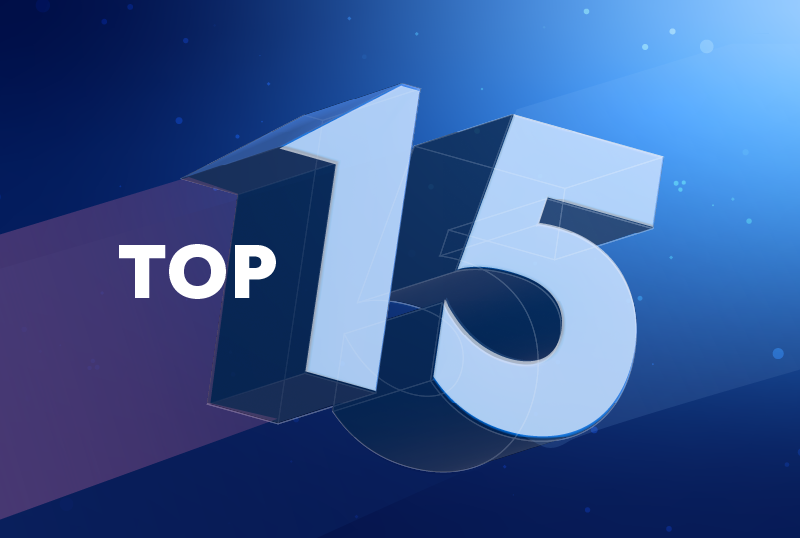6Sense vs ZoomInfo: 2025 Comparison (+More Options)
Learn about key features, pricing, pros, cons, and why Demandbase is the better sales intelligence platform.


Picture your ideal customer. They’re actively researching solutions like yours. Their budget is approved. They’re ready to buy.
Now multiply that by 1,000 accounts.
That’s what 6Sense and ZoomInfo promise to help you find.
One uses AI to predict who’s ready to buy, the other gives you the world’s largest B2B contact database. Both claim to be the answer to your revenue team’s prayers.
But ask any sales or marketing leader who’s used either platform, and you’ll hear a different story:
- “Worst functionality of any platform/extension I can think of. Incredibly buggy, half the contacts are inaccurate.” (via Reddit)
- “I OFTEN find that there is no email or phone available for prospects who have been at the company for years. Also notice that info is rarely updated especially if the prospect has a title change within the company.” (via Reddit)
- “Great contact information but their company database is horrible. It will tell a company with 25 employees on LinkedIn did 500 million in revenue and has 600 employees. It makes no sense.” (via Reddit)
Let’s go beyond the feature comparisons and fancy AI promises.
In this guide, we’ll show you what actually matters when choosing between these platforms – including the uncomfortable truths both vendors would rather you didn’t know.
ZoomInfo vs 6sense: General Overview
6Sense Overview
6Sense is an AI-powered account-based marketing platform designed to help B2B organizations identify, target, and engage in-market accounts. It leverages predictive analytics, buyer intent data, and advanced AI models to uncover hidden demand and optimize go-to-market strategies.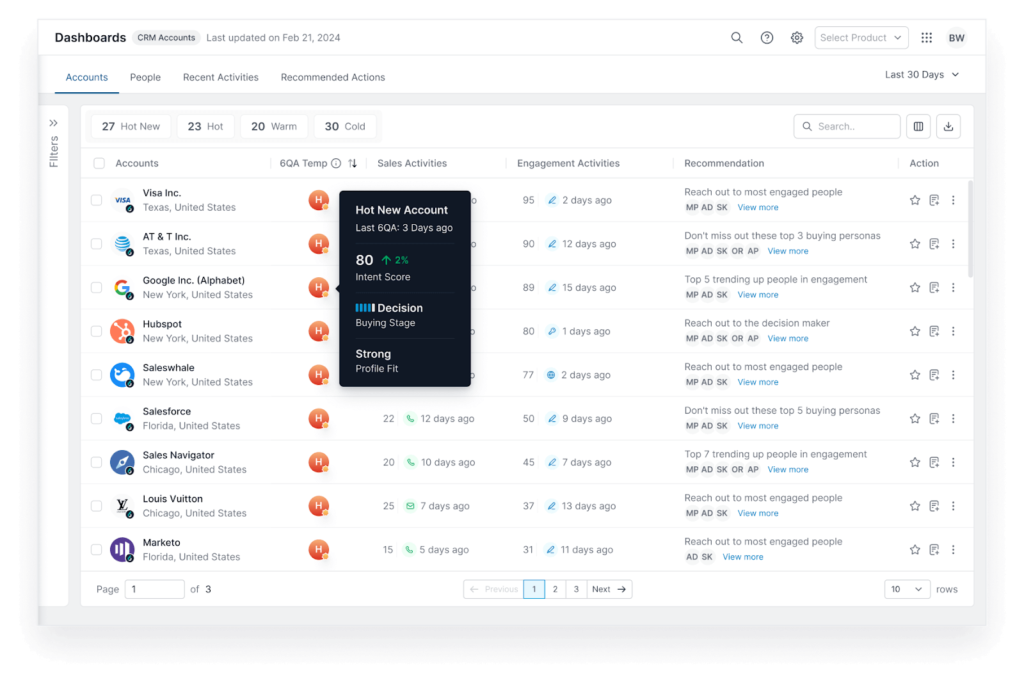
A standout feature is the ‘6signal Graph’, which detects anonymous buying signals and deanonymizes visitor behavior—even when prospects research anonymously on third-party sites. By analyzing billions of intent signals across multiple touchpoints, including website visits, content engagement, and third-party research, 6Sense provides actionable insights that help sales teams focus on high-value opportunities.
6Sense also features ‘RevenueAI’, a sales intelligence tool that predicts buying stages and scores accounts based on their likelihood to convert. Complementing this is the ‘Next Best Action’ feature, which uses AI to recommend optimal outreach strategies, enabling sales teams to prioritize high-value accounts effectively.
Market Positioning and Target Audience
6sense is best for ABM-driven organizations that want to target high-value accounts, predict buyer intent, and automate multi-channel engagement.
Recommended → 15 Best 6Sense Competitors & Alternatives Right Now
ZoomInfo Overview
ZoomInfo is a B2B intelligence platform that provides sales, marketing, and recruitment teams with accurate, real-time data to identify, engage, and convert prospects.
The platform combines firmographic, technographic, and intent data, enabling businesses to pinpoint ideal buyers, understand their needs, and engage them. It also continuously updates and verifies millions of data points daily (using AI and human verification), ensuring users have access to reliable, up-to-date information for their prospecting and account-based marketing efforts.
Additionally, ZoomInfo offers a suite of AI-powered tools designed to optimize the entire sales and marketing process. The ‘SalesOS’ module helps sales teams find and prioritize high-value leads, while ‘MarketingOS’ enables marketers to create highly targeted campaigns based on intent signals. In terms of recruiting, ‘TalentOS’ supports recruiters in sourcing top candidates by leveraging real-time employment data.
Another key feature on the platform is ZoomInfo’s ‘Conversation Intelligence’, which provides call analysis, helping sales teams refine their approach and improve conversion rates.
Market Positioning and Target Audience
ZoomInfo is best for sales teams looking for accurate prospect data, direct contact information, and AI-powered sales automation tools to improve outreach efficiency.
Key Differences Between 6Sense and ZoomInfo
6Sense:
- Predictive Analytics and Intent Data. 6Sense uses AI-powered predictive models to analyze buying signals from various digital sources (web activity, search behavior, content engagement). This allows businesses to forecast when an account is most likely to convert, helping sales teams prioritize high-intent accounts rather than relying on traditional lead scoring.
- Automated Multi-Channel Orchestration. 6Sense automates multi-channel engagement, allowing marketing and sales teams to execute personalized campaigns across email, digital ads, and outbound sales. Its ‘Next Best Actions’ feature suggests the most effective outreach strategies, eliminating guesswork and manual effort.
- Dynamic Account Prioritization. 6Sense automatically adjusts account prioritization based on real-time behavior changes. Instead of static account lists, teams get continuously updated rankings of their most promising opportunities based on actual buying signals.
ZoomInfo:
- Extensive Contact-Level Data Enrichment. Features a database with over 300 million business contacts and 100 million company profiles. This enables the platform to provide highly accurate direct dials, verified emails, and job titles for decision-makers.
- Intent-Based Targeting for Lead Generation. While 6sense uses predictive analytics to identify in-market accounts, ZoomInfo provides intent data at the contact level, tracking individual buyer behaviors such as content downloads, event participation, and online searches to determine sales readiness.
- Integration Capabilities. ZoomInfo supports over 500 business apps, making it easy for teams to integrate into their existing tech stack and workflows.
Recommended → 16 Best ZoomInfo Alternatives & Competitors Right Now
Why Demandbase is a Better Option
Full-Funnel ABM vs. Lead-Based Engagement
Unlike ZoomInfo, which is primarily focused on contact-level data, and 6Sense, which leans heavily on predictive AI for account-based insights, Demandbase provides an end-to-end ABM solution that covers the entire sales and marketing funnel.
It helps businesses identify, engage, and convert accounts across multiple channels, rather than just focusing on lead enrichment or predictive scoring.
- What This Means for You: If you’re looking for an ABM platform that supports everything from intent data gathering to personalized engagement and pipeline acceleration, Demandbase is the more complete solution.
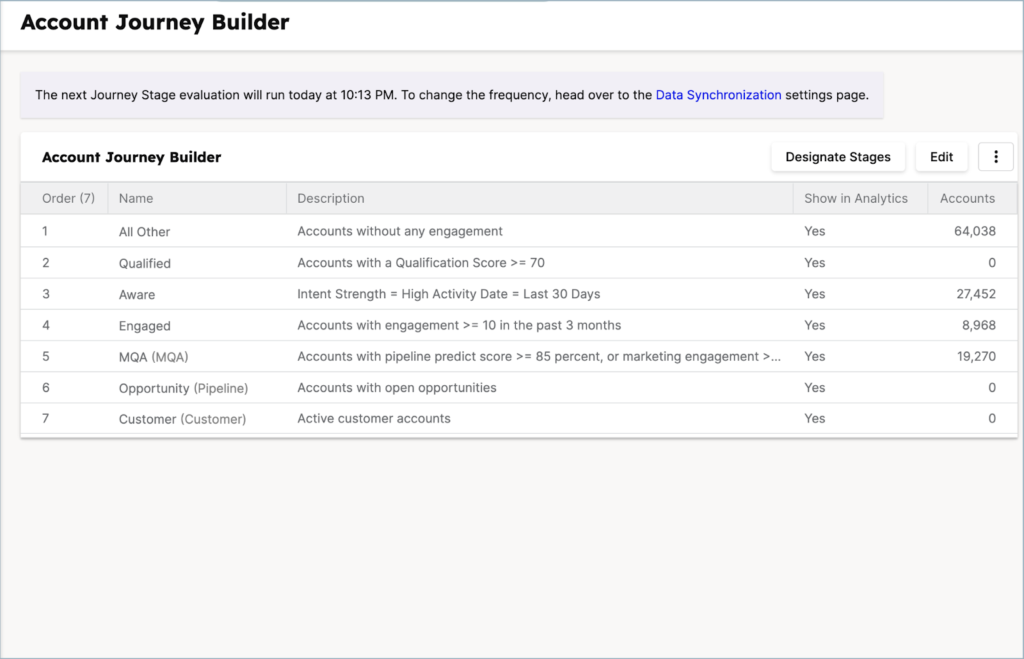
Superior First-Party and Third-Party Intent Data
Demandbase combines first-party behavioral data (from your website, CRM, and marketing automation tools) with third-party intent signals, offering a much richer and more accurate view of buying intent than either 6Sense or ZoomInfo.
Comparison:
6Sense heavily relies on third-party intent signals, which can be less accurate if an account’s buying activity isn’t widely visible.
ZoomInfo focuses on contact-level intent, which may not provide a complete picture of an account’s readiness to buy.
- What This Means for You: You get more precise targeting and better prioritization of high-value accounts based on real engagement.

More Granular and Customizable Segmentation
Demandbase allows users to create highly specific audience segments based on a combination of intent data, firmographics, technographics, and account engagement history.
- What This Means for You: You get more control over your audience targeting, allowing for better campaign precision and sales efficiency.

Advanced Personalization and Engagement Capabilities
Demandbase provides real-time personalization for website content, digital ads, and email outreach, automatically adjusting messaging based on an account’s behavior and engagement history.
- What This Means for You: Your marketing and sales efforts become more relevant, more engaging, and more likely to convert.
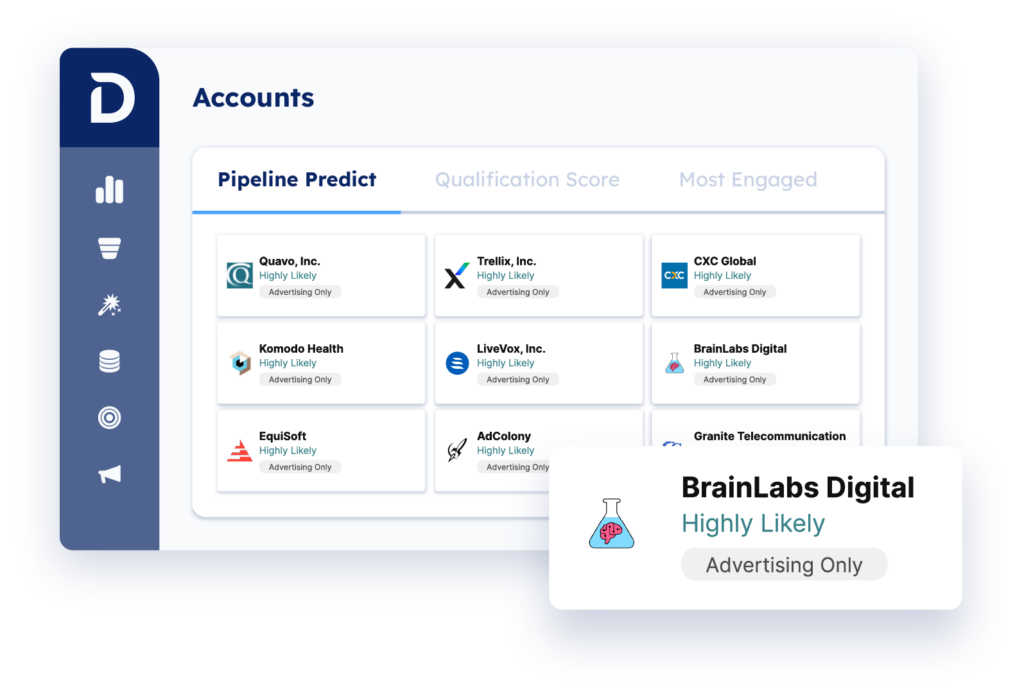
Deeper Account Intelligence
ZoomInfo’s AI capabilities are primarily focused on lead scoring, enrichment, and outreach automation—not deep ABM insights. There’s also 6Sense, which uses AI to predict which accounts are in-market, but its data is limited by the external signals it can track.
Meanwhile, Demandbase’s AI-powered ABM solution goes beyond simple intent data to provide insights into an account’s probability to buy, ideal customer fit, and engagement trends over time.
- What This Means for You: Your sales and marketing teams can focus on the most relevant accounts with higher precision, reducing wasted effort on low-intent leads.
Recommended → 10 Reasons AI Said Customers Love Demandbase, Supported by Customer Use Cases
6Sense: Features, Use Cases, Pricing, Pros & Cons
Key Features
- Account-Based Advertising. Delivers personalized ads to target accounts across multiple digital channels. Also integrates with Google, LinkedIn, and programmatic ad platforms, ensuring that in-market buyers receive relevant messaging.
- Predictive Analytics & Scoring. Scores accounts based on buying readiness, prioritizing leads that are more likely to convert. It continuously learns from historical deal data, engagement trends, and real-time activity to refine predictions.
- Dynamic Segmentation. Automatically updates account lists based on real-time behavior changes and intent signals. Accounts move between segments as their engagement levels and buying stages change.
- Conversational Email AI. AI-powered email assistant that helps sales teams automate and optimize email outreach. It analyzes past interactions, drafts personalized responses, and suggests follow-ups, improving engagement without manual effort.
- Intent Data Insights. Collects third-party and first-party intent signals to track which accounts are actively researching relevant topics. It monitors content consumption, search behavior, and ad interactions to determine which prospects are showing buying intent.
Main Use Cases
- Account-Based Marketing (ABM) Execution. Helps marketing teams identify high-intent accounts and engage them with personalized, multi-channel campaigns, ensuring outreach is timely and relevant.
- Anonymous Website Visitor Identification. The platform provides businesses with tools to reveal website visitors who don’t fill out forms by matching them to real accounts, providing sales teams with early engagement opportunities.
- Automated Sales Outreach & Engagement. Provides AI-powered ‘Next Best Actions’, guiding sales teams on when and how to reach out via email, calls, or ads based on where an account is in the buying journey.
Pricing
- Free. $0 per month.
- Team. Custom pricing.
- Growth. Custom pricing.
- Enterprise. Custom pricing.
While 6Sense provides a Free plan suitable for individuals or small teams, scaling up to the Team, Growth, or Enterprise plans requires custom pricing discussions.
Users have also disclosed that the Enterprise plan can start at approximately $120,000 annually, often requiring a two-year commitment.
It’s also important to note that 6Sense employs a credit-based system (as seen in the ‘free’ plan) — which offers 50 credits per month. This allocation may be limiting if you have higher prospecting needs but working with a tight budget.
Pros
- Streamlined Audience Management. Unifies audiences across ad platforms, ensuring consistent reach and saving time in campaign management [See Review].
- Advanced Predictive Analytics. Delivers detailed and accurate account-based marketing insights with AI-driven analytics for identifying high-intent prospects [See Review].
- Advanced Keyword and Intent Insights. Tracks customer search patterns, categorizes accounts by engagement level (hot, warm, or cold), and suggests relevant contacts via LinkedIn integration [See Review].
Cons
- Reporting Limitations. Lacks comprehensive reporting capabilities for sales collaboration, with steep learning curve affecting daily workflow adoption [See Review].
- Data Interpretation Challenges. Sales teams struggle with data interpretation despite UI improvements, with particular weaknesses in EMEA data coverage [See Review].
- Budget Constraints. Advertising costs escalate quickly, particularly for refined persona targeting, creating challenges for limited marketing budgets [See Review].
Market Share and Customer Base
Market Share of 6Sense
6Sense holds a significant position in the ABM solutions market, experiencing substantial growth since its founding in 2013. After its $200 million Series E funding round in 2022, the company reached a $5.2 billion valuation.
While exact market share percentages aren’t publicly disclosed, 6Sense competes directly with major players in the enterprise B2B marketing and sales intelligence space.
Customer Base of 6Sense
6Sense serves primarily enterprise and mid-market B2B organizations, with a particular strength in the technology, manufacturing, and professional services sectors.
Their customer roster includes notable companies like Cognizant, Dell, Cisco, Thomson Reuters, and PTC.
6Sense Alternative: Why Choose Demandbase?
- Flexible Account Scoring Models. While 6Sense offers preset scoring models, Demandbase allows complete customization of account scoring frameworks. Teams can adjust weights for different signals, create industry-specific scoring rules, and modify scoring criteria without requiring vendor involvement. This flexibility is crucial for companies with unique sales motions or complex qualification criteria.

- Industry-Specific Intent Models. Demandbase has developed vertical-specific intent models that understand the unique buying patterns in different industries. For example, in manufacturing, the platform recognizes industry-specific terms and research patterns that 6Sense’s general intent model might miss. This results in more accurate intent scoring for specialized sectors.
- You can also filter intent by keywords or geolocation.
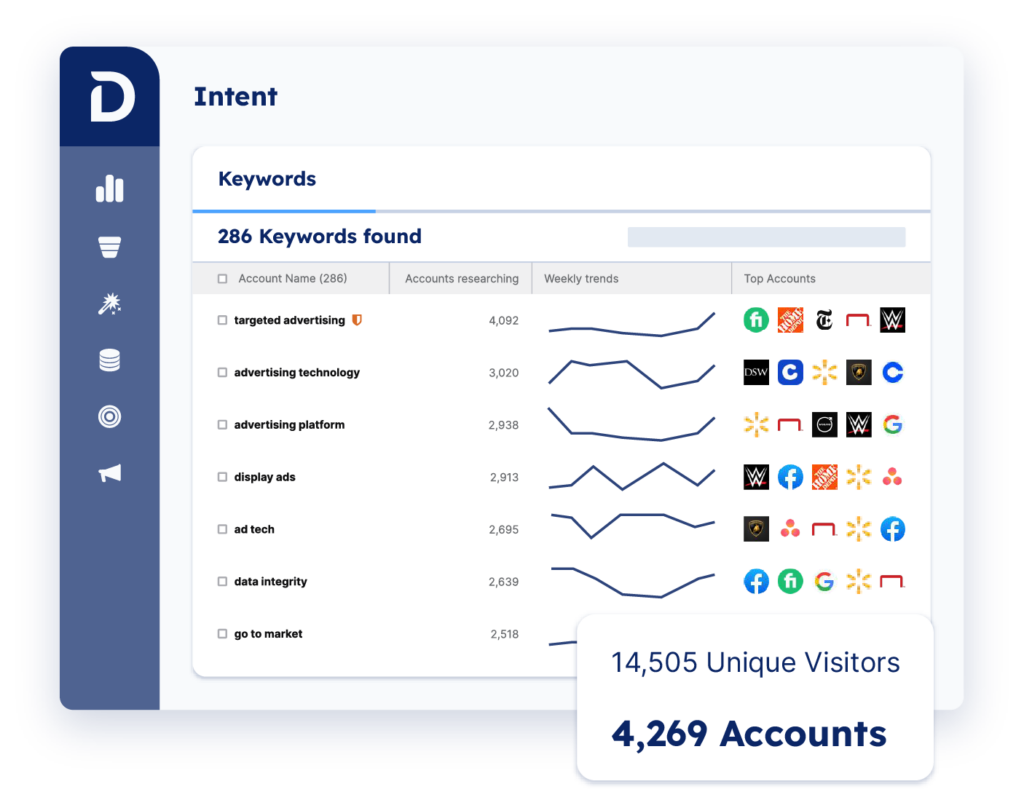
- You can also filter intent by keywords or geolocation.
- Cross-Channel Attribution Accuracy. The platform provides more detailed attribution insights across marketing channels. While 6Sense focuses primarily on digital touchpoints, Demandbase tracks and attributes both online and offline interactions, including events, sales meetings, and phone calls, giving a more complete view of the customer journey.
Demandbase vs 6Sense: Get Comparison Report →
ZoomInfo: Features, Use Cases, Pricing, Pros & Cons
Key Features
- ReachOut Chrome Extension. Provides instant access to contact details and key buying signals directly within your browser.
- Scoops. Delivers real-time intelligence about company events and changes that signal buying opportunities. Tracks leadership changes, funding rounds, expansions, and other business events.
- Chorus. AI-powered conversation intelligence tool that analyzes sales calls, emails, and meetings to provide insights on buyer behavior, deal risks, and sales coaching opportunities.
- FormComplete. Automatically enriches web form submissions with comprehensive company and contact data. Reduces form fields while collecting complete prospect information.
- WebSights. Identifies anonymous visitors to your website by revealing their company information. This enables sales teams to proactively engage potential leads who have shown interest but haven’t made direct contact.
Main Use Cases
- High-Precision Sales Prospecting. ZoomInfo helps sales teams quickly identify and connect with decision-makers using SalesOS, which provides direct dials, verified emails, and company insights.
- Automated Sales Outreach & Engagement. With Engage, sales reps can automate email sequences, call cadences, and follow-ups, ensuring consistent and personalized engagement with prospects. This speeds up the sales cycle while maintaining a human touch.
- Hiring & Talent Sourcing. Using TalentOS recruiters can identify top candidates, track job changes, and access verified contact details. It enables HR teams to build strong pipelines of qualified talent without relying on outdated or incomplete databases.
Pricing
- Professional Plan. Starts at $14,995 per year.
- Advanced Plan. Starts at $24,995 per year.
- Elite Plan. Starts at $39,995 per year.
Extra Add-ons:
- Extra Users: Starting at $1,500 per user for Pro, $2,500 for Advanced and Elite
- Additional Credits: Range from $5,500 for 10,000 credits to $32,000 for 100,000 credits
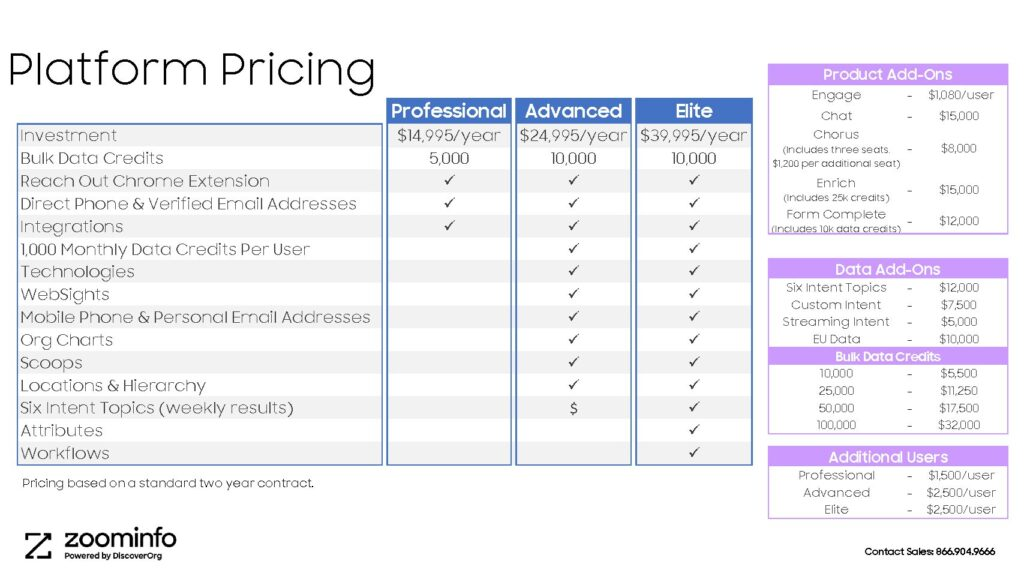
Important things to note about ZoomInfo’s pricing:
- All plans require an annual commitment, with no monthly options available.
- The entry-level plan typically requires a minimum two-year contract.
- Pricing is not publicly disclosed on their website; a sales consultation is required for exact quotes.
- Additional users and features increase the cost.
Several users have also complained about ZoomInfo’s shady (and weirdly inappropriate business) practices — particularly its two-year compulsory contract.

Recommended → Is ZoomInfo Worth It? We Did The Research
Pros
- Targeted Prospecting. Facilitates precise company and decision-maker targeting with detailed filtering options, including growth metrics and intent signals [See Review].
- Accurate Contact Intelligence. Delivers up-to-date contact and company information, enabling efficient lead generation and targeted outreach [See Review].
- Efficient Data Management. Enables efficient list uploading and matching based on characteristics, with direct CRM integration for updated contact information [See Review].
Cons
- Lack of Specific Location Data. The platform does not provide contact data at specific location levels, complicating the integration of such data into our CRM when account levels do not match [See Review].
- Syncing Issues with Salesforce. Syncing relevant contact updates between ZoomInfo and Salesforce is often difficult, requiring additional manual filtering [See Review].
- Complex Learning Process. Steep learning curve despite available training resources, with limited functionality in saved searches and import processes [See Review].
Market Share and Customer Base
Market Share of ZoomInfo
Within the account-based marketing sector, ZoomInfo maintains a 26.04% market share. In addition, following its IPO in 2020 and acquisitions of companies like Chorus.ai and RingLead, ZoomInfo has accrued an annual revenue exceeding $1billion.
Customer Base of ZoomInfo
ZoomInfo serves over 35,000 customers across various industries, ranging from small businesses to Fortune 100 companies. Their customer base includes major enterprises like Amazon, Google, Oracle, and Zoom, but they also cater to growing startups.
ZoomInfo Alternative: Why Choose Demandbase?
- Integrated ABX Platform. Unlike ZoomInfo’s focus on contact data and basic engagement, Demandbase provides a complete Account-Based Experience platform. The system unifies account identification, engagement, and measurement in one platform, whereas ZoomInfo users often need multiple tools to achieve similar functionality.
- Better Account-Based Advertising with Real-Time Intent Signals. While ZoomInfo allows users to run targeted ad campaigns through its MarketingOS, its ad targeting is primarily based on firmographic data rather than real-time engagement signals.
- On the other hand, Demandbase offers AI-powered account-based advertising that targets accounts showing strong intent and also adapts in real-time based on an account’s evolving engagement. This ensures that advertising spend is always focused on the highest-priority accounts, reducing wasted impressions and increasing ROI.
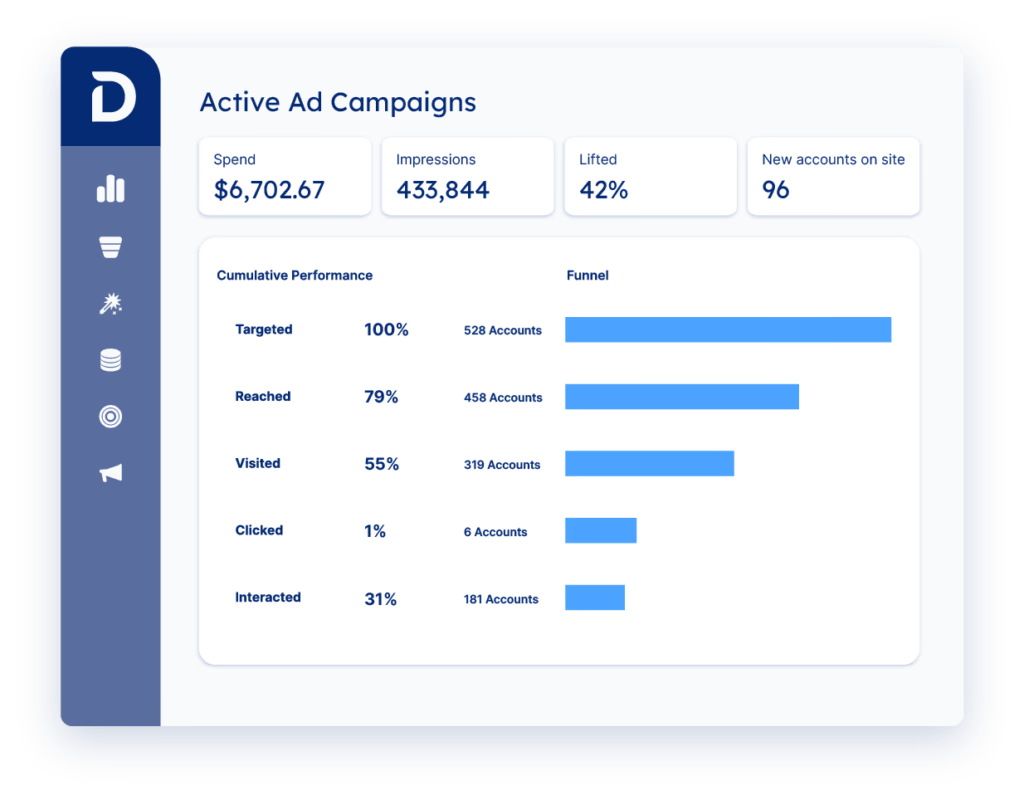
- On the other hand, Demandbase offers AI-powered account-based advertising that targets accounts showing strong intent and also adapts in real-time based on an account’s evolving engagement. This ensures that advertising spend is always focused on the highest-priority accounts, reducing wasted impressions and increasing ROI.
- Precise Account Identification. ZoomInfo’s WebSights feature identifies anonymous website visitors, but its accuracy is often limited by static IP tracking and less advanced AI matching techniques.
- Meanwhile, Demandbase’s, leverages real-time AI learning and multi-source identity matching to link anonymous visitors to their correct accounts more accurately. This means fewer mismatches, better visibility into high-intent accounts, and more opportunities to engage the right decision-makers.


Demandbase vs ZoomInfo: Get Comparison Report →
How to Choose the Right Sales Intelligence Platform for Your Business?
1. Define Your Sales and Marketing Goals
The best sales intelligence platform is one that directly supports your business objectives—whether it’s high-volume prospecting, account-based marketing (ABM), or real-time lead engagement.For example:
- Companies focused on high-volume outreach should prioritize extensive lead databases and automation tools.
- ABM-driven teams should look for platforms that provide deep account intelligence and intent tracking.
- If pipeline acceleration and deal conversion are key goals, AI-powered insights and predictive lead scoring are must-haves.
DB Insider → Conduct an internal audit of your current lead generation, prospecting, and sales engagement challenges before selecting a tool.
Identify bottlenecks (e.g., low lead conversion rates, slow outreach processes) and choose a solution that directly addresses those gaps.
2. Evaluate the Quality and Depth of Data
Most platforms rely on real-time data collection, AI-driven enrichment, and third-party integrations to provide up-to-date information.
However, not all refresh data at the same rate. Some tools update contact and firmographic data daily or weekly, while others use outdated or static lists that require manual verification.
A strong platform should provide:
- Verified direct dials and email addresses for improved outreach success.
- Regularly updated firmographics and technographics (company size, revenue, software usage).
- Global data coverage to support international sales efforts.
DB Insider → Conduct a data quality test before committing to a platform. Request a sample dataset from the vendor and cross-check it against your CRM to see how accurate and up-to-date the contacts are.
This will prevent issues like high email bounce rates and disconnected phone numbers.
3. Leverage AI and Predictive Analytics Capabilities for Smarter Sales Targeting
Opt for platforms that use AI and machine learning to help sales teams prioritize leads, identify buyer intent, and optimize outreach timing. These tools analyze behavioral patterns, engagement history, and firmographic data to recommend which leads are most likely to convert.
Key features to look for:
- Predictive lead scoring to rank prospects based on sales-readiness.
- Intent tracking that identifies companies actively researching solutions in your industry.
- Next Best Action (NBA) recommendations to optimize outreach and follow-ups.
DB Insider → AI is only as good as the data behind it. Make sure the platform’s predictive models are based on real engagement metrics (website visits, ad clicks, CRM activity) rather than just external browsing data, which can lead to false intent signals.
4. Consider Ease of Use and Team Adoption
The success of a sales intelligence platform hinges heavily on user adoption and practical daily usage by your team.
Focus on platforms that offer intuitive interfaces matching your team’s technical proficiency and workflow patterns. For example, solutions offering role-based views and customizable dashboards allow users to access relevant information without overwhelming them with unnecessary data.
Also consider the initial learning curve; top platforms typically require 2-3 weeks for basic proficiency and 6-8 weeks for advanced feature mastery.
DB Insider → Focus on tools that integrate seamlessly into your existing workflow rather than platforms that add unnecessary complexity. For example, direct integrations with CRM (Salesforce, HubSpot, Microsoft Dynamics) and marketing automation platforms (Marketo, Eloqua, Pardot) ensure that data flows in real-time across teams.
5. Compare Pricing Models and Scalability
Look beyond the base subscription cost to understand the total financial impact on your business.
Some platforms use credit-based pricing, where each lead export or search consumes credits, while others offer flat-rate subscription models with unlimited access.
Things to consider:
- Credit-based pricing can be restrictive for high-volume prospecting.
- Long-term contracts (12-24 months) may limit flexibility as your sales team scales.
- Hidden fees for add-ons (intent data, conversation intelligence, global data access).
In addition, also calculate long-term ROI from using the solution. For example, you can track metrics such as:
- Reduction in research time (often 60-70% with leading platforms),
- Improvement in connection rates (typically 20-30% higher with accurate data), and
- Increase in pipeline velocity (leading platforms report 15-25% faster deal cycles).
DB Insider → Negotiate a custom pricing plan based on your sales volume, data needs, and contract flexibility. Some providers offer pilot programs or short-term contracts that allow businesses to test usability before committing long-term.
6. Ensure Data Privacy, Compliance, and Security
With increasing data privacy regulations, businesses need to ensure that their sales intelligence platform collects, processes, and stores data legally.
A compliant platform should:
- Only provide legally sourced contact data (opt-in records, verified business databases).
- Offer GDPR and CCPA-compliant data handling for European and US markets.
- Have robust security measures (encryption, access controls, and compliance audits).
DB Insider → If your business operates in heavily regulated industries (finance, healthcare, government contracts), prioritize vendors that offer compliance features such as automated consent tracking and data anonymization.
See Demandbase in action Book Quick Demo →
Demandbase: A Better Alternative to 6Sense and ZoomInfo
We’ve seen the gaps: 6Sense shows you who’s ready to buy but leaves your sales team scrambling for contact data. ZoomInfo gives you every contact under the sun but leaves you guessing about timing.
And if you’re using both? You’re burning through six figures annually just to piece together a complete solution.
But the real cost goes beyond just the price tag. It’s about opportunities missed, resources wasted, and revenue targets that become harder to hit.
This is exactly why revenue teams are switching to Demandbase.
Instead of cobbling together partial solutions, you get:
- True Account Intelligence. Not just intent signals or contact data, but a complete picture of your target accounts – including real-time buying signals, comprehensive contact information, and actual engagement patterns across every channel.
- Precision Timing. Know exactly when accounts are ready for outreach based on their actual buying journey, not just general intent scores or database updates.
- Complete Contact Coverage. Access to verified decision-maker contact data that’s actually relevant to your sales motion, not just a massive database of maybe-relevant contacts.
- Unified Revenue Intelligence. One platform that aligns your entire revenue team around the same insights, the same priorities, and the same opportunities.
Think about what this means for your team: No more toggling between platforms to piece together insights. No more missing opportunities because of data gaps.
Just clear, actionable intelligence that shows you exactly which accounts to pursue, when to engage them, and how to reach the right decision-makers.
See Demandbase in action Book Quick Demo →

Related content



